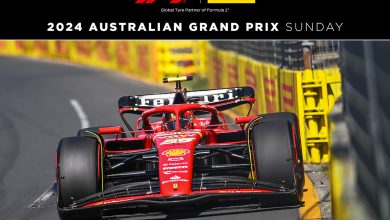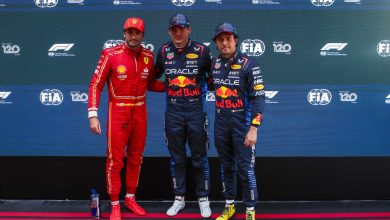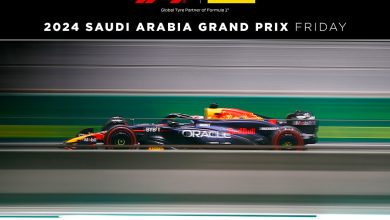Agenda for change: David Ward to contest FIA presidential election
The imperative of good governance has become a dominant challenge for leaders around the world. Applying best practice has become a hallmark of excellence for global companies and sports federations alike. That is why the FIA should ensure its governance is the best it can be – promoting the effectiveness and accountability of its leadership.
A comprehensive review of the FIA statutes and structure was proposed in Jean Todt’s 2009 election manifesto. Some useful progress has been made. For example, an Ethics Committee and the International Tribunal dealing with disciplinary matters have been established. These are welcome developments, but the comprehensive review promised in 2009 has fallen short. There is still work to be done.
The FIA can give the impression of being antiquated and autocratic. The powers of the Presidency are too wide to be effective or fully accountable. In some areas the trend for reform has been reversed. For example, the maximum possible period in office for the President has been extended from eight years to twelve. The threshold for nominations for Presidential candidates has been set high which favours the incumbent and deters other candidates. Recently there has also been unfortunate use of ‘support letters’ at various FIA regional meetings which are designed to elicit public commitments of support before the election process even opens, thereby deterring alternative candidates from coming forward. These are of questionable legitimacy.
The 2013 Presidential election is an important opportunity for the FIA membership to decide not just on their next leadership team but also on the further reforms the Federation still needs. To contribute to this vital debate, ‘Agenda for Change’ offers 20 proposals that would modernise the FIA’s governance making it more transparent and responsive to the membership. The reforms cover the following key areas:
• Presidency, Management, and Location;
• Resources and Club Support;
• Transparency and Good Governance;
• Elections, Eligibility and Procedures.
In summary the effect of the 20 reforms proposed in ‘Agenda for Change’ would be the following:
The FIA President would have the possibility to serve in a non-executive role. The appointment of a Chief Executive Officer and the creation of a Management Board would give the FIA a new professional strategic capacity it currently lacks. The evolution of the Senate into a Supervisory Board would strengthen independent oversight over the Presidency and executive. The appointment of Commissioners would reinforce the FIA’s day to day involvement in its major World Championships. The improvement of cost control and resource allocation would ensure that all available surpluses are channelled to sport and mobility clubs for their development, especially in low and middle income countries. Finally, the proposals regarding elections would make it easier for contested elections to take place. The full list of 20 governance reform proposals are set out below.
Agenda for Change: 20 FIA Governance Reforms
Presidency, Management, and Location
1. Allow the FIA President the possibility to serve in a non-executive role
2. Appoint a Chief Executive Officer (CEO) on a fixed term contract hired by open recruitment
3. Create a Management Board (with representation from each World Council, and chaired by the FIA President) responsible for budget matters, contract and due diligence supervision, and implementation of a multi-year Strategic Plan developed with the World Councils for approval by the General Assembly
4. Convert the Senate into a Supervisory Board (following modern corporate practice of a two tier board structure)
5. Appoint Commissioners for each FIA World Championship responsible to the World Motor Sport Council for day to day management and supervision of the championship
6. Retain Paris headquarters as main administration office and locus of the sporting power and all major contractual agreements
Resources and Club Support
7. At a time of austerity aim to reduce overheads, avoid waste, and reduce travel expenditure
8. Use all the revenue in excess of regulatory costs of the F1 Championship arising from the new Concorde agreement for investment in motor sport safety, sustainability, solidarity funding of ASN development programmes, and for training of officials and volunteers
9. Avoid duplicating the work of the FIA Foundation and the FIA Institute and concentrate FIA activities on priorities that are beyond these organisations’ mandates
10. Use any overall operating surpluses to fund development grants for clubs in low and middle income countries
Transparency and Good Governance
11. Publish annual accounts that conform to International Accounting Standards and include a narrative from the President and CEO explaining the overall performance of the FIA, key developments of the year, any relevant issues or related party transactions and future plans
12. Amend the Ethics Code so that it is fully consistent with the 2001 Statement on Good Governance Principles developed by the FIA and the International Olympic Committee
13. Adopt a policy against bribery and corruption to the latest international standards and amend the Ethics Code accordingly
14. Ensure that due diligence is carried out on all external contracts to ensure that they are consistent with competition policies and avoid commercial conflicts of interest
Elections, Eligibility and Procedures
15. Restrict eligibility for FIA Presidential election to Club Presidents or Senior Office Holders nominated by their clubs
16. Restore the Presidential term limit to two periods of four years not three as at present
17. Reduce the nominating threshold to three clubs (one from each member category)
18. Reduce the Presidential list to three: a President and two Deputies for Sport and Mobility
19. Elect the Senate President (future Supervisory Board) separately from the Presidential list
20. Ensure equal treatment to all candidates and ban any pre-election period support letters.
ends







